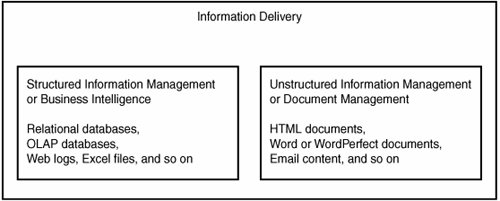Introduction to Information Delivery
| Organizations today of all sizes find themselves increasingly awash in data yet hungering for information to help them meet their business objectives. These corporations, from Main Street and Wall Street alike, have spent large amounts of time and money over the past 10 or so years implementing systems to help collect data on and streamline their operations. From monolithic Enterprise Resource Planning (ERP) systems (SAP, PeopleSoft, Oracle, and so on) through Customer Relationship Management (CRM) systems (Siebel, Pivotal, Salesforce.com, and so on) to Custom Data Warehousing projects, these firms are now looking for ways to extract value from that collective body of data to help them run their businesses more productively and competitively. These firms are looking for a strategic information delivery or business intelligence solution to help them become more productive and ultimately compete more effectively. The products covered in this book are geared toward meeting that challenge. The information delivery products and solutions that are presented in this book are often categorized under the Business Intelligence (BI) banner. BI is the industry of value-added information delivery based on structured data sourcesessentially providing meaningful, business-driven value and information to business end-users by connecting them to data with appropriate tools and products. Figure 0.1 highlights the conceptual divide of Information Delivery Solutions into the structured and unstructured world. Although evidence suggests an eventual blurring of the boundaries between these discrete industries over time, the Business Objects products covered in this book most aptly fit under the BI banner. Figure 0.1. The information delivery industry is broadly divided into structured and unstructured information management. Industry analysts in the information delivery area regularly highlight the impressive adoption rates of BI products in the last few years as testimony to their value. The dynamic double-digit percentage growth rates for industry leaders like Business Objects are especially impressive when the difficult macroeconomic operating environment of recent years is taken into account. Ironically, many suggest, it is this same poor economic environment that has largely driven the increased worldwide demand for BI functionality as firms work to increase their productivity and competitiveness by leveraging existing investmentsand doing more with less. This BI industry driver along with a few other drivers are covered in the next section. |
EAN: 2147483647
Pages: 365